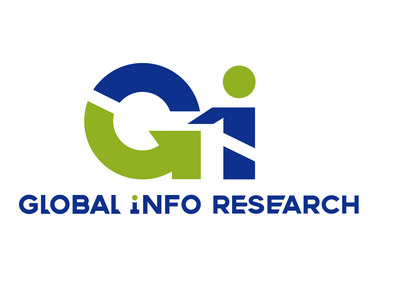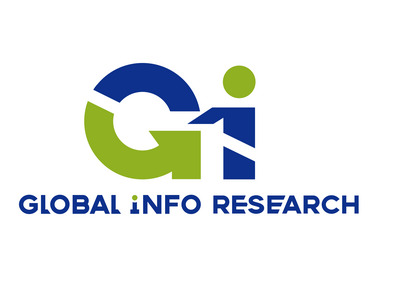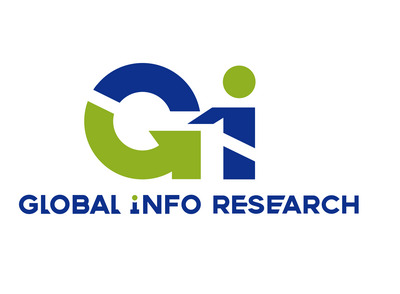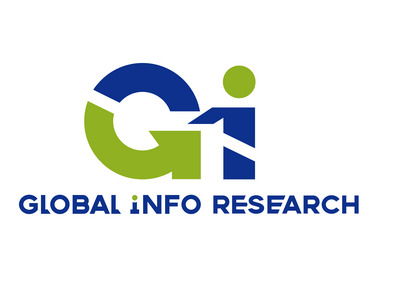
Cavity-Backed Circularly Polarized Spiral Antenna Market Research Report
On Oct 28, Global Info Research released "Global Cavity-Backed Circularly Polarized Spiral Antenna Market 2025 by Manufacturers, Regions, Type and Application, Forecast to 2031". This report includes an overview of the development of the Cavity-Backed Circularly Polarized Spiral Antenna industry chain, the market status of Cavity-Backed Circularly Polarized Spiral Antenna Market, and key enterprises in developed and developing market, and analysed the cutting-edge technology, patent, hot applications and market trends of Cavity-Backed Circularly Polarized Spiral Antenna.
According to our (Global Info Research) latest study, the global Cavity-Backed Circularly Polarized Spiral Antenna market size was valued at US$ 264 million in 2024 and is forecast to a readjusted size of USD 400 million by 2031 with a CAGR of 6.1% during review period.
In this report, we will assess the current U.S. tariff framework alongside international policy adaptations, analyzing their effects on competitive market structures, regional economic dynamics, and supply chain resilience.
In 2024, global sales of cavity-backed circularly polarized spiral antennas (CPSs) were expected to reach approximately 118,000 units, with an average price of approximately US,185 per unit and a gross profit margin of approximately 30%–33%. This antenna utilizes a spiral radiating structure with a back-cavity reflector to enhance directivity, suppress back radiation, and stabilize polarization performance. This allows it to maintain excellent circularly polarized reception and transmission performance in multipath interference or complex electromagnetic environments. It is commonly used in satellite communications, UAV links, measurement and control systems, and electronic countermeasures platforms. In a typical application, a medium-sized UAV platform may be equipped with one CPS, while a high-power ground station or vehicle-mounted unit may be equipped with two to four CPSs. Upstream raw materials primarily include the highly conductive metal spiral structure (copper or beryllium copper), back-cavity reflector material (aluminum alloy or composite material), dielectric substrate and impedance matching network, precision connectors, and feed cables. Material costs account for approximately 42%–48% of the total cost of the antenna. This antenna plays a crucial role in satellite communications, UAV SATCOM links, electronic countermeasures, and measurement and control communications. Downstream users include satellite communications companies, UAV system manufacturers, aerospace and defense system integrators, ground tracking and control stations, and communications carrier companies. The upstream supply chain involves materials, connectors, high-precision machining, and electroplating processes, while the downstream involves close collaboration with platform integrators and end users. Alaris Antennas specializes in high-gain spiral arrays and dual-polarization application solutions, with an annual production capacity of approximately 31,000 units.
Supply Situation
Upstream raw materials primarily include high-conductivity silver-plated copper conductors, aviation-grade aluminum alloy cavity-backed materials, PTFE dielectric substrates, impedance matching network components, and high-frequency coaxial connectors. Raw material costs account for approximately 42%–48% of the total system cost. Typical raw material suppliers include Amphenol, Molex, 3M, TE Connectivity, and Laird Performance Materials.
Manufacturer Characteristics
L3Harris Technologies holds a leading position in the North American defense and satellite ground communication system supporting market, with an annual production capacity of approximately 46,000 units. Alaris Antennas specializes in high-gain helical arrays and dual-polarization application solutions, with an annual production capacity of approximately 31,000 units. Cobham Advanced Electronic Solutions utilizes multi-layer cavity-backed and hybrid dielectric technology in high-frequency circularly polarized antennas, with a production capacity of approximately 20,000 units. Its products cover military, telemetry, and aviation communications applications.
Applications
Satellite Communication Terminals: Customers include SES, Inmarsat, Gilat, OneWeb, and VT iDirect
UAV and Defense Measurement and Control: Customers include General Atomics, Northrop Grumman, Elbit Systems, Boeing Defense, and Leonardo
Mobile Satellite Links: Customers include Thales, Cobham SATCOM, Honeywell Aerospace, Satcom Direct, and iDirect Government
Electronic Reconnaissance: Customers include Lockheed Martin, Raytheon, BAE Systems, L3Harris, and Israel Aerospace Industries
Research and Experimental Institutions: Customers include NASA, ESA, ISRO, DLR, and JAXA
Technology Trends
Cavity-backed circularly polarized helical antennas are evolving towards multi-band, lightweight, and intelligent tuning. With the increasing adoption of LEO and MEO satellite constellation communications, terminals are increasingly adopting circularly polarized beams to minimize multipath interference and cross-polarization loss. New-generation products generally adopt a broadband dual-arm helical structure, combined with a wave-absorbing back cavity design to enhance low-profile performance. Composite dielectrics and carbon fiber-reinforced materials are used for weight reduction. Some models incorporate MEMS variable capacitor arrays and AI-based automatic impedance matching algorithms to achieve dynamic bandwidth adaptation. Furthermore, modular helical array combinations will become the mainstream form factor for ground stations to meet the needs of high-throughput satellites and spectrum-overlapping missions.
Market Influencing Factors
Global market growth is primarily driven by the mandatory use of circularly polarized waves in satellite communication systems. Starting in 2023, most new satellite link protocols (particularly Ka and Ku bands) will require terminals to use circularly polarized antennas to meet link isolation and interference suppression standards, significantly driving demand for cavity-backed helical antennas. The European and American markets benefit from the expansion of LEO constellation communications and military surveillance, with North American manufacturers leading the way with their technology and system integration capabilities. The Asia-Pacific market (particularly China and India) is benefiting from the rapid growth driven by the substitution of domestic satellite communication systems and the widespread adoption of industrial drones. Upstream copper, aluminum, PTFE, and precision connector price fluctuations are highly cost-sensitive, while downstream platform providers are placing increasingly stringent requirements on bandwidth consistency, polarization retention, and environmental durability. Overall, cavity-backed circularly polarized helical antennas are gradually expanding from defense and scientific research applications to commercial satellite communications and intelligent unmanned systems. Their high-frequency broadband and array integration will become the key growth lines in the next five years.
This report is a detailed and comprehensive analysis for global Cavity-Backed Circularly Polarized Spiral Antenna market. Both quantitative and qualitative analyses are presented by manufacturers, by region & country, by Frequency Range and by Application. As the market is constantly changing, this report explores the competition, supply and demand trends, as well as key factors that contribute to its changing demands across many markets. Company profiles and product examples of selected competitors, along with market share estimates of some of the selected leaders for the year 2025, are provided.
According to our (Global Info Research) latest study, the global Cavity-Backed Circularly Polarized Spiral Antenna market size was valued at US$ 264 million in 2024 and is forecast to a readjusted size of USD 400 million by 2031 with a CAGR of 6.1% during review period.
In this report, we will assess the current U.S. tariff framework alongside international policy adaptations, analyzing their effects on competitive market structures, regional economic dynamics, and supply chain resilience.
In 2024, global sales of cavity-backed circularly polarized spiral antennas (CPSs) were expected to reach approximately 118,000 units, with an average price of approximately US,185 per unit and a gross profit margin of approximately 30%–33%. This antenna utilizes a spiral radiating structure with a back-cavity reflector to enhance directivity, suppress back radiation, and stabilize polarization performance. This allows it to maintain excellent circularly polarized reception and transmission performance in multipath interference or complex electromagnetic environments. It is commonly used in satellite communications, UAV links, measurement and control systems, and electronic countermeasures platforms. In a typical application, a medium-sized UAV platform may be equipped with one CPS, while a high-power ground station or vehicle-mounted unit may be equipped with two to four CPSs. Upstream raw materials primarily include the highly conductive metal spiral structure (copper or beryllium copper), back-cavity reflector material (aluminum alloy or composite material), dielectric substrate and impedance matching network, precision connectors, and feed cables. Material costs account for approximately 42%–48% of the total cost of the antenna. This antenna plays a crucial role in satellite communications, UAV SATCOM links, electronic countermeasures, and measurement and control communications. Downstream users include satellite communications companies, UAV system manufacturers, aerospace and defense system integrators, ground tracking and control stations, and communications carrier companies. The upstream supply chain involves materials, connectors, high-precision machining, and electroplating processes, while the downstream involves close collaboration with platform integrators and end users. Alaris Antennas specializes in high-gain spiral arrays and dual-polarization application solutions, with an annual production capacity of approximately 31,000 units.
Supply Situation
Upstream raw materials primarily include high-conductivity silver-plated copper conductors, aviation-grade aluminum alloy cavity-backed materials, PTFE dielectric substrates, impedance matching network components, and high-frequency coaxial connectors. Raw material costs account for approximately 42%–48% of the total system cost. Typical raw material suppliers include Amphenol, Molex, 3M, TE Connectivity, and Laird Performance Materials.
Manufacturer Characteristics
L3Harris Technologies holds a leading position in the North American defense and satellite ground communication system supporting market, with an annual production capacity of approximately 46,000 units. Alaris Antennas specializes in high-gain helical arrays and dual-polarization application solutions, with an annual production capacity of approximately 31,000 units. Cobham Advanced Electronic Solutions utilizes multi-layer cavity-backed and hybrid dielectric technology in high-frequency circularly polarized antennas, with a production capacity of approximately 20,000 units. Its products cover military, telemetry, and aviation communications applications.
Applications
Satellite Communication Terminals: Customers include SES, Inmarsat, Gilat, OneWeb, and VT iDirect
UAV and Defense Measurement and Control: Customers include General Atomics, Northrop Grumman, Elbit Systems, Boeing Defense, and Leonardo
Mobile Satellite Links: Customers include Thales, Cobham SATCOM, Honeywell Aerospace, Satcom Direct, and iDirect Government
Electronic Reconnaissance: Customers include Lockheed Martin, Raytheon, BAE Systems, L3Harris, and Israel Aerospace Industries
Research and Experimental Institutions: Customers include NASA, ESA, ISRO, DLR, and JAXA
Technology Trends
Cavity-backed circularly polarized helical antennas are evolving towards multi-band, lightweight, and intelligent tuning. With the increasing adoption of LEO and MEO satellite constellation communications, terminals are increasingly adopting circularly polarized beams to minimize multipath interference and cross-polarization loss. New-generation products generally adopt a broadband dual-arm helical structure, combined with a wave-absorbing back cavity design to enhance low-profile performance. Composite dielectrics and carbon fiber-reinforced materials are used for weight reduction. Some models incorporate MEMS variable capacitor arrays and AI-based automatic impedance matching algorithms to achieve dynamic bandwidth adaptation. Furthermore, modular helical array combinations will become the mainstream form factor for ground stations to meet the needs of high-throughput satellites and spectrum-overlapping missions.
Market Influencing Factors
Global market growth is primarily driven by the mandatory use of circularly polarized waves in satellite communication systems. Starting in 2023, most new satellite link protocols (particularly Ka and Ku bands) will require terminals to use circularly polarized antennas to meet link isolation and interference suppression standards, significantly driving demand for cavity-backed helical antennas. The European and American markets benefit from the expansion of LEO constellation communications and military surveillance, with North American manufacturers leading the way with their technology and system integration capabilities. The Asia-Pacific market (particularly China and India) is benefiting from the rapid growth driven by the substitution of domestic satellite communication systems and the widespread adoption of industrial drones. Upstream copper, aluminum, PTFE, and precision connector price fluctuations are highly cost-sensitive, while downstream platform providers are placing increasingly stringent requirements on bandwidth consistency, polarization retention, and environmental durability. Overall, cavity-backed circularly polarized helical antennas are gradually expanding from defense and scientific research applications to commercial satellite communications and intelligent unmanned systems. Their high-frequency broadband and array integration will become the key growth lines in the next five years.
This report is a detailed and comprehensive analysis for global Cavity-Backed Circularly Polarized Spiral Antenna market. Both quantitative and qualitative analyses are presented by manufacturers, by region & country, by Frequency Range and by Application. As the market is constantly changing, this report explores the competition, supply and demand trends, as well as key factors that contribute to its changing demands across many markets. Company profiles and product examples of selected competitors, along with market share estimates of some of the selected leaders for the year 2025, are provided.
Sample Report Request Cavity-Backed Circularly Polarized Spiral Antenna
https://www.globalinforesearch.com/reports/3075512/cavity-backed-circularly-polarized-spiral-antenna
Market segment by Type: 0.5-2 GHz、 2-18 GHz、 Others
Market segment by Application: Satellite Communications、 Electronic Warfare、 Defense Measurement and Control、 Embedded Airborne Applications、 Others
Major players covered: L3Harris Technologies、 Alaris Antennas、 Antenna Experts、 A-INFO、 IMC、 MEC、 Cobham Advanced Electronic Solutions、 Smiths Interconnect、 EOSOL Aerospace、 Steatite、 SEC Antenna、 JEM Engineering、 Ocean Microwave、 RF Miso
Market segment by region, regional analysis covers: North America (United States, Canada and Mexico), Europe (Germany, France, United Kingdom, Russia, Italy, and Rest of Europe), Asia-Pacific (China, Japan, Korea, India, Southeast Asia, and Australia),South America (Brazil, Argentina, Colombia, and Rest of South America),Middle East & Africa (Saudi Arabia, UAE, Egypt, South Africa, and Rest of Middle East & Africa).
The content of the study subjects, includes a total of 15 chapters:
Chapter 1, to describe Cavity-Backed Circularly Polarized Spiral Antenna product scope, market overview, market estimation caveats and base year.
Chapter 2, to profile the top manufacturers of Cavity-Backed Circularly Polarized Spiral Antenna, with price, sales, revenue and global market share of Cavity-Backed Circularly Polarized Spiral Antenna from 2020 to 2025.
Chapter 3, the Cavity-Backed Circularly Polarized Spiral Antenna competitive situation, sales quantity, revenue and global market share of top manufacturers are analyzed emphatically by landscape contrast.
Chapter 4, the Cavity-Backed Circularly Polarized Spiral Antenna breakdown data are shown at the regional level, to show the sales quantity, consumption value and growth by regions, from 2020 to 2031.
Chapter 5 and 6, to segment the sales by Type and application, with sales market share and growth rate by type, application, from 2020 to 2031.
Chapter 7, 8, 9, 10 and 11, to break the sales data at the country level, with sales quantity, consumption value and market share for key countries in the world, from 2020 to 2024.and Cavity-Backed Circularly Polarized Spiral Antenna market forecast, by regions, type and application, with sales and revenue, from 2025 to 2031.
Chapter 12, market dynamics, drivers, restraints, trends and Porters Five Forces analysis.
Chapter 13, the key raw materials and key suppliers, and industry chain of Cavity-Backed Circularly Polarized Spiral Antenna.
Chapter 14 and 15, to describe Cavity-Backed Circularly Polarized Spiral Antenna sales channel, distributors, customers, research findings and conclusion.
https://www.globalinforesearch.com/reports/3075512/cavity-backed-circularly-polarized-spiral-antenna
Market segment by Type: 0.5-2 GHz、 2-18 GHz、 Others
Market segment by Application: Satellite Communications、 Electronic Warfare、 Defense Measurement and Control、 Embedded Airborne Applications、 Others
Major players covered: L3Harris Technologies、 Alaris Antennas、 Antenna Experts、 A-INFO、 IMC、 MEC、 Cobham Advanced Electronic Solutions、 Smiths Interconnect、 EOSOL Aerospace、 Steatite、 SEC Antenna、 JEM Engineering、 Ocean Microwave、 RF Miso
Market segment by region, regional analysis covers: North America (United States, Canada and Mexico), Europe (Germany, France, United Kingdom, Russia, Italy, and Rest of Europe), Asia-Pacific (China, Japan, Korea, India, Southeast Asia, and Australia),South America (Brazil, Argentina, Colombia, and Rest of South America),Middle East & Africa (Saudi Arabia, UAE, Egypt, South Africa, and Rest of Middle East & Africa).
The content of the study subjects, includes a total of 15 chapters:
Chapter 1, to describe Cavity-Backed Circularly Polarized Spiral Antenna product scope, market overview, market estimation caveats and base year.
Chapter 2, to profile the top manufacturers of Cavity-Backed Circularly Polarized Spiral Antenna, with price, sales, revenue and global market share of Cavity-Backed Circularly Polarized Spiral Antenna from 2020 to 2025.
Chapter 3, the Cavity-Backed Circularly Polarized Spiral Antenna competitive situation, sales quantity, revenue and global market share of top manufacturers are analyzed emphatically by landscape contrast.
Chapter 4, the Cavity-Backed Circularly Polarized Spiral Antenna breakdown data are shown at the regional level, to show the sales quantity, consumption value and growth by regions, from 2020 to 2031.
Chapter 5 and 6, to segment the sales by Type and application, with sales market share and growth rate by type, application, from 2020 to 2031.
Chapter 7, 8, 9, 10 and 11, to break the sales data at the country level, with sales quantity, consumption value and market share for key countries in the world, from 2020 to 2024.and Cavity-Backed Circularly Polarized Spiral Antenna market forecast, by regions, type and application, with sales and revenue, from 2025 to 2031.
Chapter 12, market dynamics, drivers, restraints, trends and Porters Five Forces analysis.
Chapter 13, the key raw materials and key suppliers, and industry chain of Cavity-Backed Circularly Polarized Spiral Antenna.
Chapter 14 and 15, to describe Cavity-Backed Circularly Polarized Spiral Antenna sales channel, distributors, customers, research findings and conclusion.
Data Sources:
Via authorized organizations:customs statistics, industrial associations, relevant international societies, and academic publications etc.
Via trusted Internet sources.Such as industry news, publications on this industry, annual reports of public companies, Bloomberg Business, Wind Info, Hoovers, Factiva (Dow Jones & Company), Trading Economics, News Network, Statista, Federal Reserve Economic Data, BIS Statistics, ICIS, Companies House Documentsm, investor presentations, SEC filings of companies, etc.
Via interviews. Our interviewees includes manufacturers, related companies, industry experts, distributors, business (sales) staff, directors, CEO, marketing executives, executives from related industries/organizations, customers and raw material suppliers to obtain the latest information on the primary market;
Via data exchange. We have been consulting in this industry for 16 years and have collaborations with the players in this field. Thus, we get access to (part of) their unpublished data, by exchanging with them the data we have.
Via authorized organizations:customs statistics, industrial associations, relevant international societies, and academic publications etc.
Via trusted Internet sources.Such as industry news, publications on this industry, annual reports of public companies, Bloomberg Business, Wind Info, Hoovers, Factiva (Dow Jones & Company), Trading Economics, News Network, Statista, Federal Reserve Economic Data, BIS Statistics, ICIS, Companies House Documentsm, investor presentations, SEC filings of companies, etc.
Via interviews. Our interviewees includes manufacturers, related companies, industry experts, distributors, business (sales) staff, directors, CEO, marketing executives, executives from related industries/organizations, customers and raw material suppliers to obtain the latest information on the primary market;
Via data exchange. We have been consulting in this industry for 16 years and have collaborations with the players in this field. Thus, we get access to (part of) their unpublished data, by exchanging with them the data we have.
From our partners.We have information agencies as partners and they are located worldwide, thus we get (or purchase) the latest data from them.
Via our long-term tracking and gathering of data from this industry.We have a database that contains history data regarding the market.
Via our long-term tracking and gathering of data from this industry.We have a database that contains history data regarding the market.
About Us:
Global Info Research
Web: https://www.globalinforesearch.com
CN: 0086-176 6505 2062
HK: 00852-58030175
US: 001-347 966 1888
Email: report@globalinforesearch.com
Web: https://www.globalinforesearch.com
CN: 0086-176 6505 2062
HK: 00852-58030175
US: 001-347 966 1888
Email: report@globalinforesearch.com
Global Info Research is a company that digs deep into global industry information to support enterprises with market strategies and in-depth market development analysis reports. We provides market information consulting services in the global region to support enterprise strategic planning and official information reporting, and focuses on customized research, management consulting, IPO consulting, industry chain research, database and top industry services. At the same time, Global Info Research is also a report publisher, a customer and an interest-based suppliers, and is trusted by more than 30,000 companies around the world. We will always carry out all aspects of our business with excellent expertise and experience.






